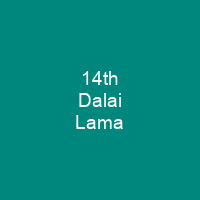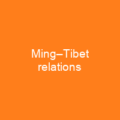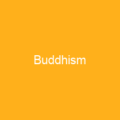The 14th Dalai Lama was born in Taktser, Tibet, on 6 July 1935. He is the highest spiritual leader of Tibet and considered a living buddha. During the 1959 Tibetan uprising, the Dalai Lama escaped to India. He currently lives in exile while remaining the most important spiritual leader.
About 14th Dalai Lama in brief
 The 14th Dalai Lama was born in Taktser, Tibet, on 6 July 1935. He is the highest spiritual leader of Tibet and considered a living buddha. The Dalai Lama is a recipient of the Nobel Peace Prize awarded in 1989, and the US Congressional Gold Medal in 2006. His work includes focus on the environment, economics, women’s rights, nonviolence, interfaith dialogue, physics, astronomy, Buddhism and science. He advocates for the welfare of Tibetans while continuing to call for the Middle Way Approach to negotiations with China for the autonomy of Tibet. During the 1959 Tibetan uprising, the Dalai Lama escaped to India, where he currently lives in exile while remaining the most important spiritual leader. He was one of seven siblings to survive childhood. The eldest was his sister Tsering Dolma, eighteen years his senior. His eldest brother, Thupten Jigme Norbu, had been recognised at the age of eight as the reincarnation of the high Lama Taktsers Rinpoche. His sister, Jetsun Pema, spent most of her adult life on the Tibetan Children’s Villages project. He has said that his first language was \”a broken Xining language which was the Chinese language\”, a form of Central Plains Mandarin, and his family did not speak the Tibetan language. He had a vision at the sacred lake of Lhamo La-tso which he interpreted as Amdo being the region where his successor would be found. The Panchen Lama had been investigating births of unusual children in the area since the death of the 13th Dalai Lamas.
The 14th Dalai Lama was born in Taktser, Tibet, on 6 July 1935. He is the highest spiritual leader of Tibet and considered a living buddha. The Dalai Lama is a recipient of the Nobel Peace Prize awarded in 1989, and the US Congressional Gold Medal in 2006. His work includes focus on the environment, economics, women’s rights, nonviolence, interfaith dialogue, physics, astronomy, Buddhism and science. He advocates for the welfare of Tibetans while continuing to call for the Middle Way Approach to negotiations with China for the autonomy of Tibet. During the 1959 Tibetan uprising, the Dalai Lama escaped to India, where he currently lives in exile while remaining the most important spiritual leader. He was one of seven siblings to survive childhood. The eldest was his sister Tsering Dolma, eighteen years his senior. His eldest brother, Thupten Jigme Norbu, had been recognised at the age of eight as the reincarnation of the high Lama Taktsers Rinpoche. His sister, Jetsun Pema, spent most of her adult life on the Tibetan Children’s Villages project. He has said that his first language was \”a broken Xining language which was the Chinese language\”, a form of Central Plains Mandarin, and his family did not speak the Tibetan language. He had a vision at the sacred lake of Lhamo La-tso which he interpreted as Amdo being the region where his successor would be found. The Panchen Lama had been investigating births of unusual children in the area since the death of the 13th Dalai Lamas.
He gave the name Kewtsang the third, most promising, child in the list of candidates. Within a year the three boys had been identified and identified as the most promising candidates. Two of his candidates had died, but the third was a boy named Jyekyundo, who had crossed off the list but was the third child to be chosen. The third, a boy called Kewtang the fourth, was the boy who was to become the 14th Dalai Lama when he was about two years old. His enthronement ceremony was held in Lhasa on 22 February 1940 and he eventually assumed full temporal duties on 17 November 1950, at the aged of 15, after the People’s Republic of China’s occupation of Tibet, just as the nascent PRC wished to assert control over it. The Gelug school’s government administered an area roughly corresponding to the Tibet Autonomous Region, as the PRC wanted to assert its control over the region. His teachings on Tibetan Mahayana and Vajrayana Buddhism, the Kalachakra teachings and initiations are international events. He also teaches on cognitive neuroscience, reproductive health and sexuality, and travels giving Tibetan Buddhist teachings. His family was of Monguor extraction and he had a brother, who was eight years older than him, and a sister who was eighteen years younger than him. His father was a farmer and his mother was a teacher.
You want to know more about 14th Dalai Lama?
This page is based on the article 14th Dalai Lama published in Wikipedia (as of Dec. 09, 2020) and was automatically summarized using artificial intelligence.







